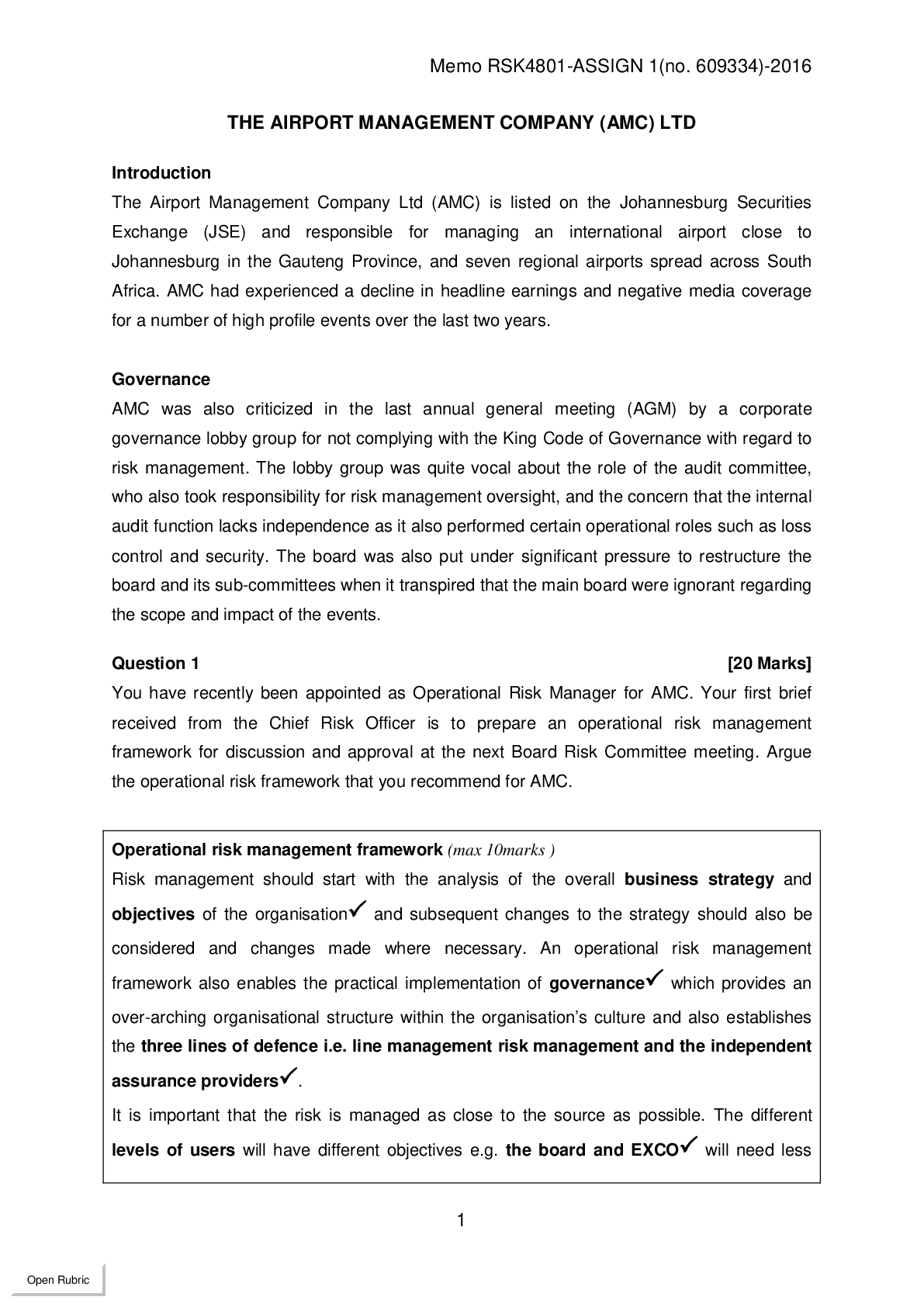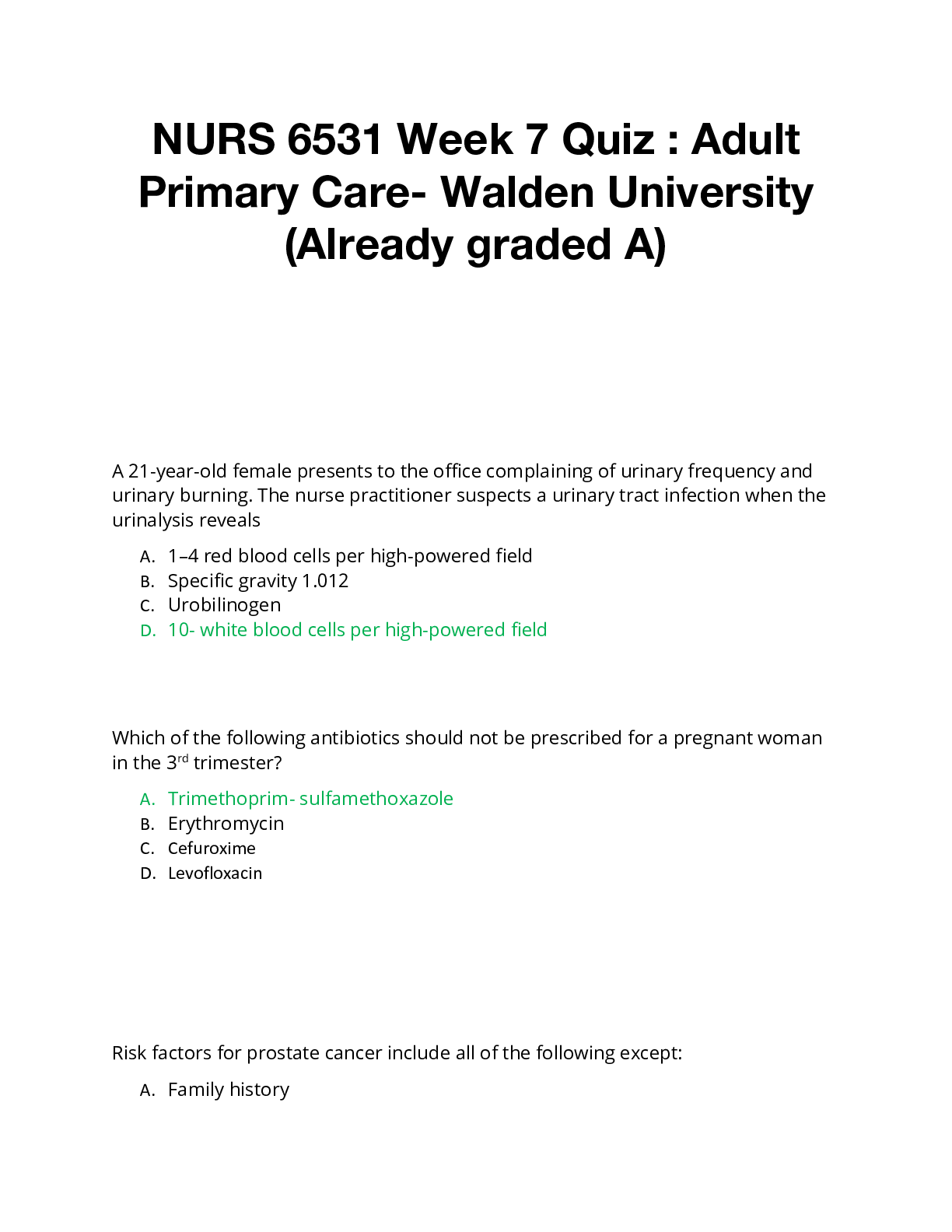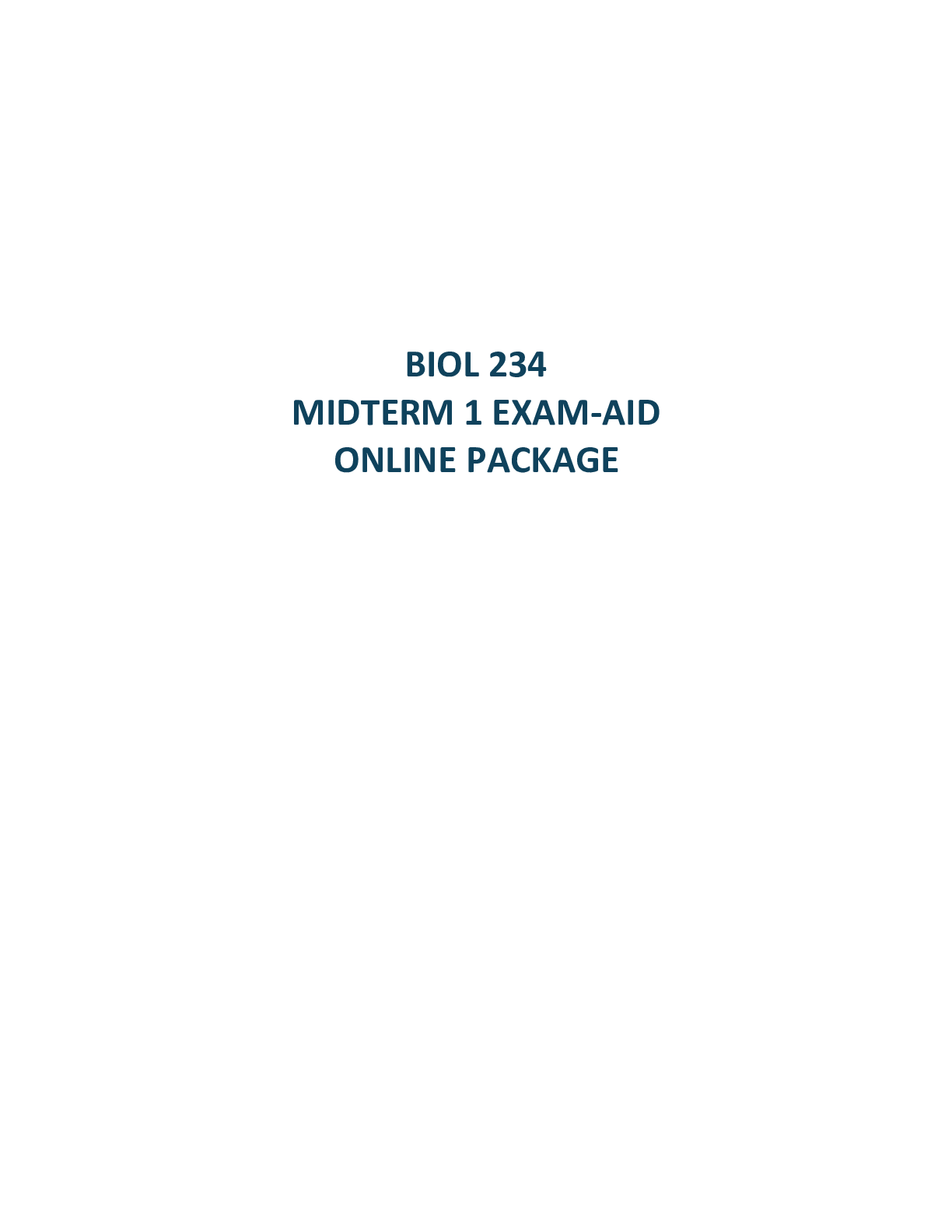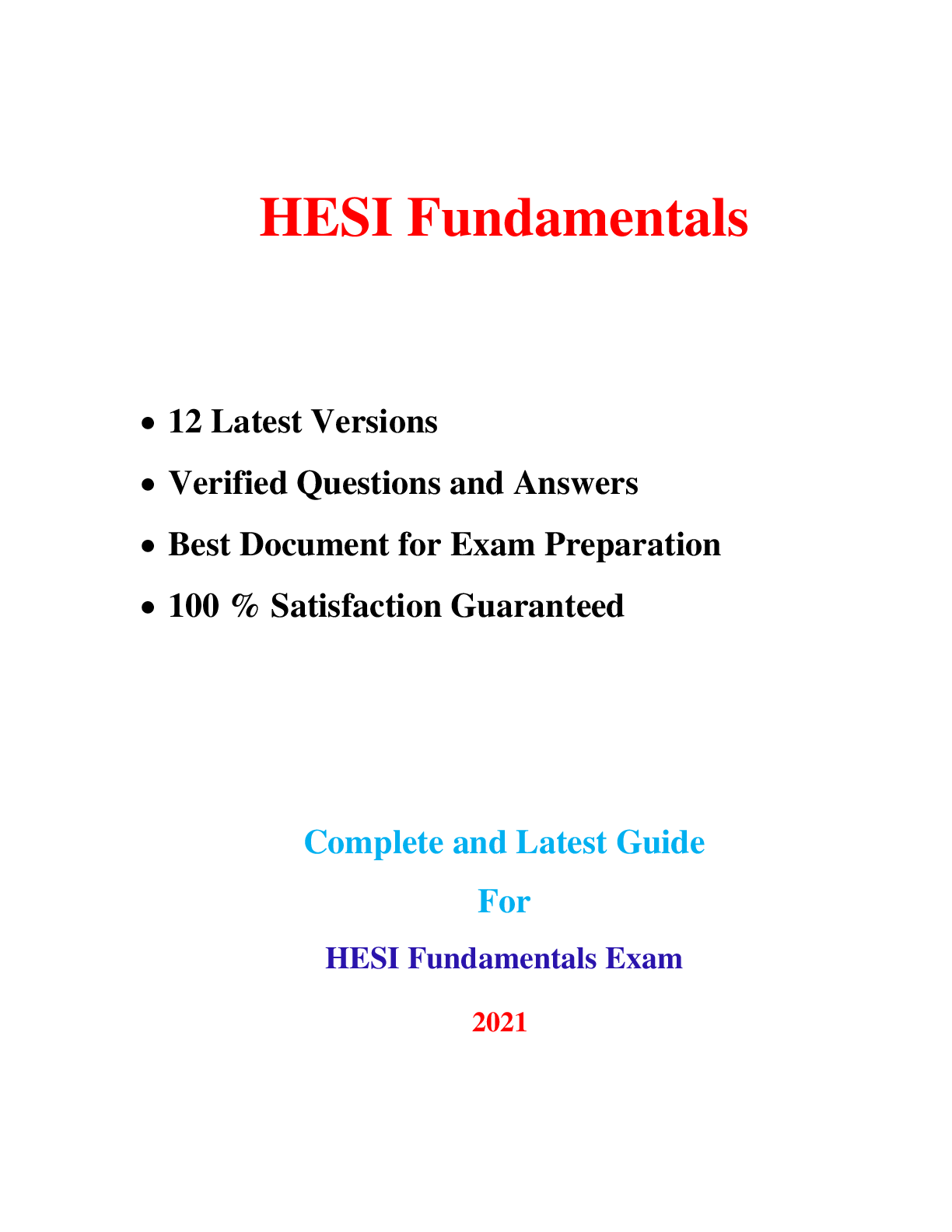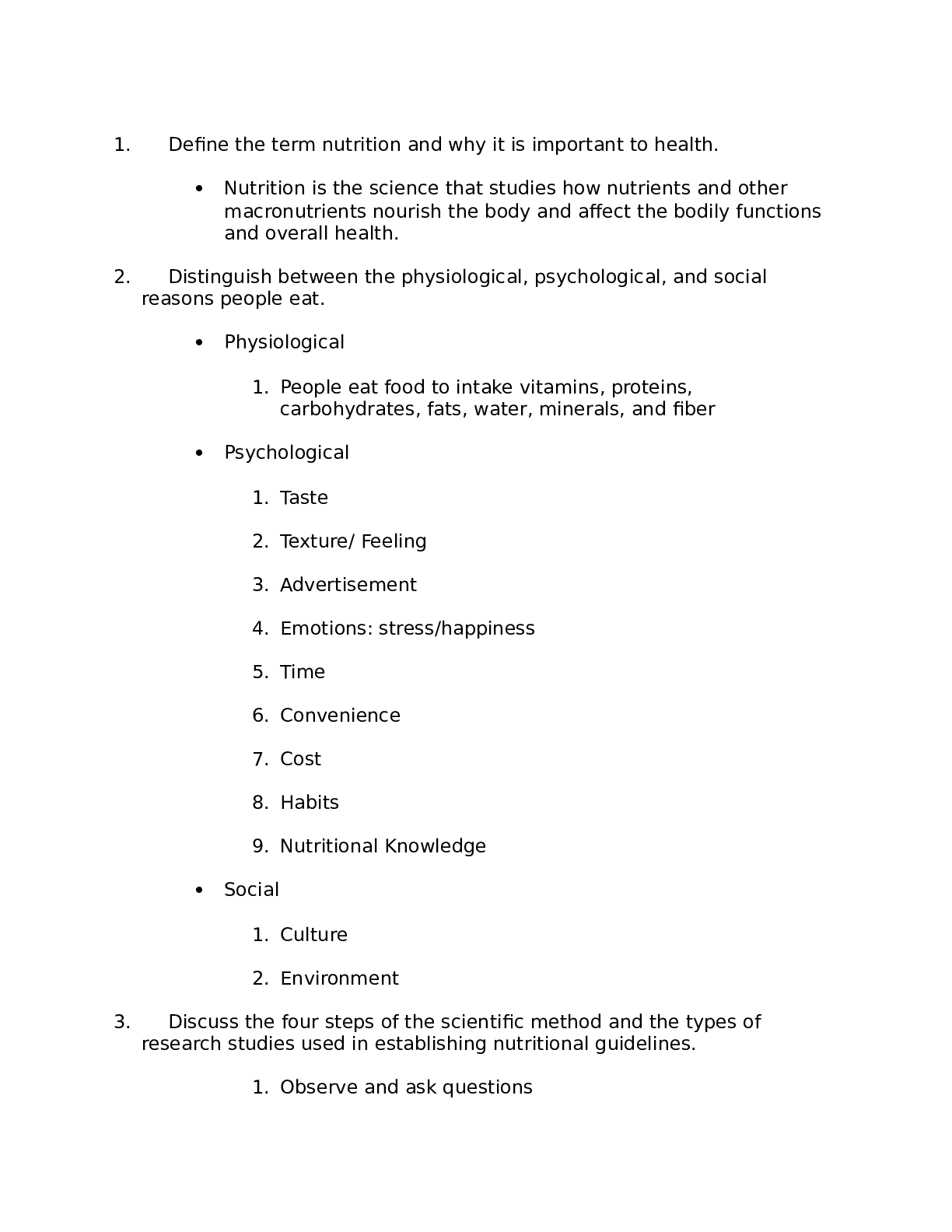*NURSING > QUESTIONS & ANSWERS > Fundamentals Nursing Care Skills 2nd Edition By Ludwig Burton -Test Bank (All)
Fundamentals Nursing Care Skills 2nd Edition By Ludwig Burton -Test Bank
Document Content and Description Below
1. After providing am care for his patient, the nurse forgot to put the bed in the lowest position and left one of the bed rails down. The patient got out of bed and fell. The nurse could be reported ... to the board of nursing for A. Assault. B. Battery. C. Negligence. D. Libel. 2. A nurse has been reported to the board of nursing for performing skills that are outside the scope of practice. The nurse should expect A. A lawsuit by the institution for malpractice. B. A hearing by the board of nursing to determine if charges are true. C. Immediate revocation of nursing license. D. Requirement to complete a minimum of 10 CEUs. 3. A nurse witnesses a coworker taking a medication ordered for a patient. The nurse’s first course of action is to A. Ask the other nurses on the unit what they would do. B. Tell the coworker that the incident will be reported the next time it happens. C. Offer to care for the nurse’s patients until the medication is no longer effective. D. Report the incident to the nurse supervisor. 4. A 17-year-old patient, injured during a football game, is in the emergency room. Prior to treatment it is the responsibility of the nurse to A. Have the stepparent sign the informed consent. B. Have the patient sign the informed consent. C. Obtain the custodial parent’s signature on the informed consent. D. Solicit the signature of the noncustodial parent on the informed consent. 5. A mentally competent patient with a terminal illness refuses to take his medications stating, “I don’t want to live like this.” The nurse will A. Ask the physician to change the patient’s medications so they can be given intravenously. B. Speak to the patient’s family about his refusal of medications so they can discuss it with him. C. Report the patient’s decision to the physician and continue to provide appropriate compassionate care. D. Explain to the patient the unwise nature of his decision and the effect that it will have on his family. 6. The nurse feels that the patient needs to be placed in a protective-restraint device to protect him from injury. In order to place a patient in restraints A. The patient must give his or her consent for restraints to be used. B. A family member must give his or her consent to use restraints. C. The nurse must have documentation that other methods have been used and failed to protect the patient. D. The patient must be alert and oriented. 7. The nurse explains to a patient that an instructional directive means A. A family member has been appointed as having power of attorney. B. A patient’s wishes must be followed in the event of a major illness. C. There is a Do-Not-Resuscitate (DNR) order for emergency personnel. D. There are written guidelines specifying care desired and under what circumstances. 8. A patient requests that the nurse copy his chart for his daughter. The nurse replies, A. “I’ll get a copy made right away. How many copies do you need?” B. “Only your lawyer can request a copy so you need to contact her.” C. “The chart belongs to the hospital, but if you give written permission, a copy can be made for you.” D. “HIPAA prevents the hospital from copying your chart, but you could speak to your physician about it.” 9. The nurse explains to coworkers that care provided for the patient is based on the Nurse Practice Act (NPA) which covers the A. Patient’s Bill of Rights. B. Rules and regulations which nurses must practice. C. American Nurses Association’s (ANA) guidelines. D. Reasons that nurses may have action taken against their licenses. 10. The patient has refused to take the medications brought in by the nurse. The nurse will chart, A. “Instructed patient that the medications will be taken now or later.” B. “Explained to patient that unless medications are taken, the physician will likely issue a discharge.” C. “Medications refused; physician notified.” D. “Physician notified that patient is uncooperative.” 11. Following a discussion with a patient about treatment options given by the primary care physician, the nurse assures the patient that the physician will support whatever decision is made. This nurse is acting as the patient’s A. Ethics board. B. Value system. C. Advocate. D. Conscience. 12. Aware that continuing education is a must in providing a high standard of patient care, the nurse will enhance her practice by A. Taking a cooking class. B. Becoming computer literate. C. Studying the history of nursing. D. Utilizing research to improve practice. Multiple [Show More]
Last updated: 2 years ago
Preview 1 out of 28 pages
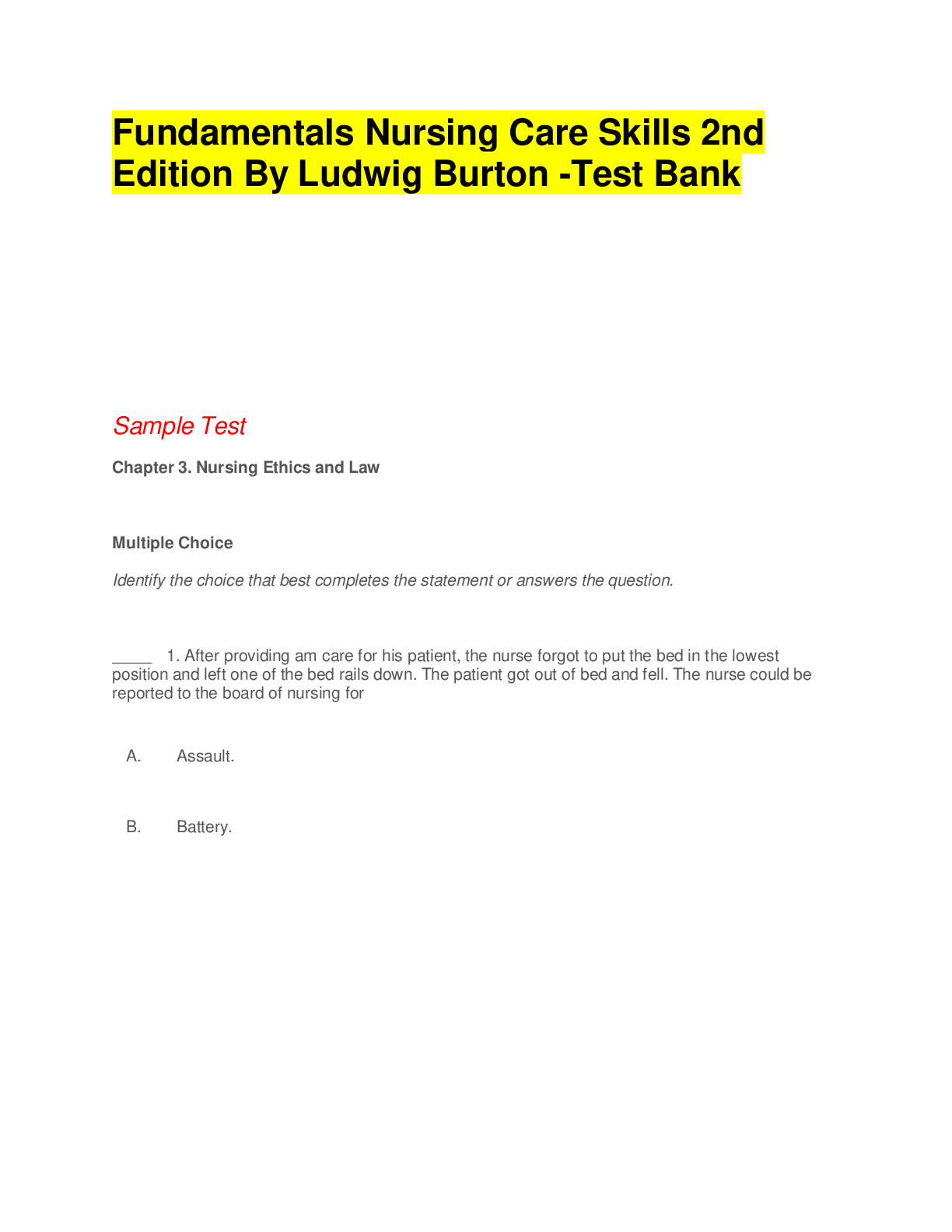
Buy this document to get the full access instantly
Instant Download Access after purchase
Buy NowInstant download
We Accept:

Reviews( 0 )
$11.00
Can't find what you want? Try our AI powered Search
Document information
Connected school, study & course
About the document
Uploaded On
Jul 21, 2022
Number of pages
28
Written in
Additional information
This document has been written for:
Uploaded
Jul 21, 2022
Downloads
0
Views
85

